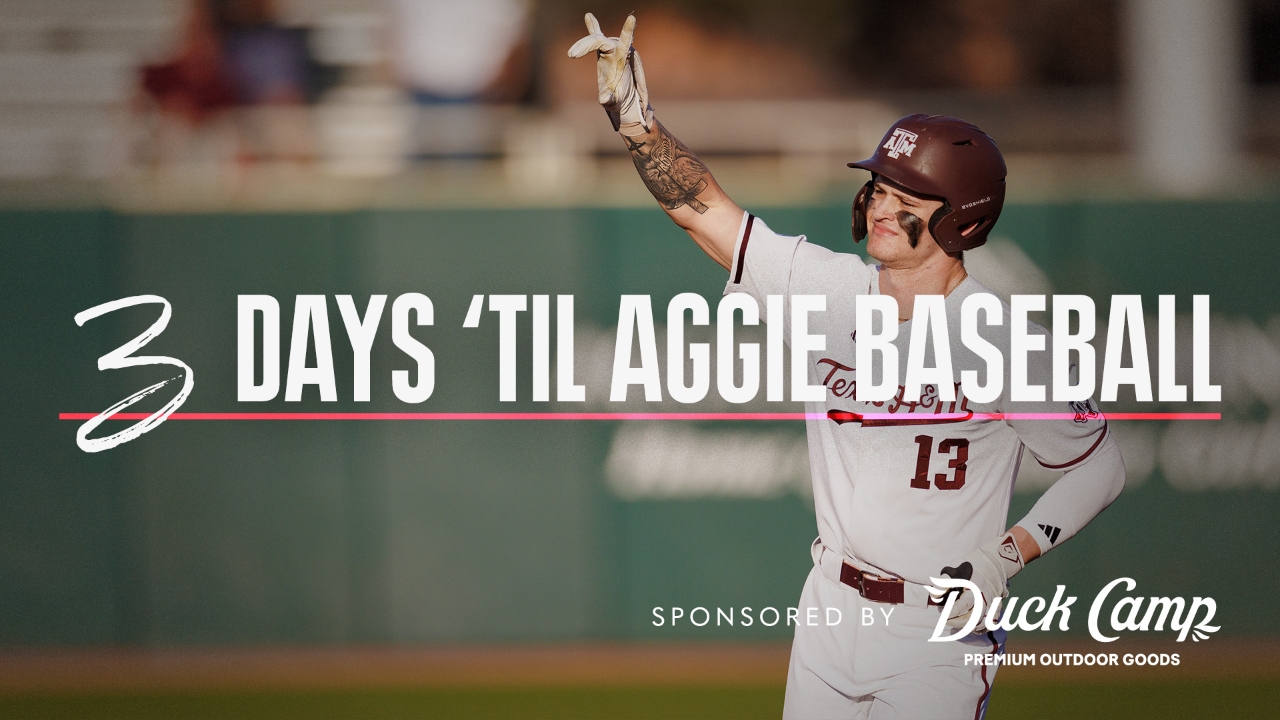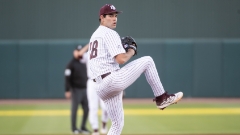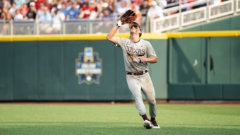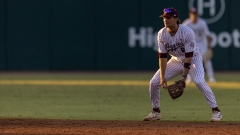
3 Days 'til: Outlining what Texas A&M's 'best version' looks like in 2025
It’s that time of year! The Texas Aggie baseball team is set to open up the 2025 season on Friday against Elon at Olsen Field at Blue Bell Park. We’re counting down the days with our 2025 Aggie Baseball Preview Series.
Well, we've just about made it.
As the clock ticks ever-nearer to toe meeting rubber and the official beginning of the Michael Earley era, I've been racking my brain to make sure we haven't missed any detail, storyline or preseason theme in our coverage.
If that is happening to me, I can only imagine what the first-year skipper is going through. I would imagine that the week before the season is tougher to navigate than the week after it starts.
Therefore, in an effort to make sure we've covered all our bases — pun intended — I just realized that for all the accolades and plaudits this team has received throughout the offseason, I have not outlined what I believe the best version of this team looks like. Now, extrapolating out all those characteristics in early February isn't necessarily a wise practice because so much can change within the ups and downs of a baseball season. However, I'll do my best to break down what I believe the best version of each facet of the game looks like with this team.
I'd like to preface by saying that I'm taking into account the ceilings of each element given the talent at hand to accomplish them. By now, I think everyone reading this is aware of what the overall team's ceiling is or can be.

Starting Pitching
Ceiling: Elite
This one is pretty easy. The best version of the starting rotation means Ryan Prager looks a lot like he did for the entirety of last season, and Justin Lamkin rides the confidence he built in Omaha into one of the premier game two starters in the entire country. Beyond that, it's Myles Patton maintaining his reputation for being a top-tier strike thrower and competitor, then any one of the remaining ultra-talented arms stepping up in the midweek role(s). That may not be one guy, either. If you're looking at the pinnacle potential for Jason Kelly's rotation, there's an argument to be made that the Tuesday/Wednesday roles are shared throughout the year because the coaching staff has confidence in 4-5 others to take on those responsibilities. I'd personally like to see Weston Moss step up and take that mantle. He's got the frame and look of an SEC starter, and Moss hitting his marks this year would likely give him the inside track to be one of those horses in 2026. The other wildcard here is a guy like Isaac Morton.
Relief Pitching
Ceiling: Elite
While I'm a little more weary of the bullpen reaching its potential than I am that of the starters, the overall quality and talent of this group still holds that elite line in terms of potential. The best version of this bullpen is a wide array of weaponry that can trot to the mound in every scenario and give the Aggies a chance for consecutive zeros defensively. Is there a Chris Cortez or Evan Aschenbeck down there? By name and experience, no. That's a massive hurdle for this team overall that we've talked about ad nauseam. Don't forget, though, that there was a time not long ago when Cortez had issues with the strike zone, and Aschenbeck nearly got cut.
Fundamentally, the No. 1 “must” for this group of bullpen arms is to limit the free passes. Throw the ball over the plate and deal with the results. As a whole, these guys possess plenty of juice to get them out of tight spots. Brad Rudis and Josh Stewart are going to be key pieces due to their leadership and experience amongst a stable that is limited in those arenas. Like I said though, whatever they're short on in callouses, they more than make up for in talent. Limit the walks and allow the raw stuff to play in the zone, and the best version of the Aggie bullpen can replicate last year's success.

Defense
Ceiling: Upper Echelon
How the Aggies defend this upcoming season has often been a glossed-over talking point in the weeks leading into Opening Day. I guess that's partially my fault. The reason for that is likely because it doesn't grab the headlines like some of the pitching or the offense overall. It's certainly worth examining because we know, more or less, that the premier teams in college baseball field in the .970 range over the course of the year. Can this A&M team do that with the leather? They certainly can, but I do think the ceiling here isn't as high as other elements of the roster.
In the outfield, Jace LaViolette and Caden Sorrell are as good of defenders as anyone in the country. Sorrell slides over to right in Braden Montgomery's old spot, and Gavin Kash will get the nod in left. I have actually been pleasantly surprised with Kash as he makes the move to the outfield after spending the overwhelming majority of his collegiate innings at first base. Former Texas A&M All-American Tyler Naquin even heaped praise on him at practice about the progress Kash has made during the final week of preparations. Is he a like-for-like replacement for Montgomery — one of the most tooled-up outfielders in program history? No, but he's certainly more than serviceable. In terms of depth, freshmen Terrence Kiel II and Sam Erickson, along with ultra utility man Jamal George, are all pieces that can make impacts out there, if necessary. A team source told me that Kiel's ability to track fly balls is right up there with LaViolette and Sorrell.
While less common, outfield errors are more costly than the infield variety. For this group, the best version does two things: 1. Makes heartbreaking plays to rob opponents of would-be extra-base hits (think Sorrell vs. South Carolina or LaViolette vs. Florida) and 2. Avoids getting caught in between, which leads to bad decisions that would cheaply give away free bases.
On the dirt, the only guy we've seen play extensively in the position he manned last year is Gavin Grahovac at third base. His freshman season at the hot corner reminded me a little bit of the early days of Trevor Werner. The raw talent was easy to spot, but it was coupled with a lack of experience at that spot which led to some ups-and-downs. It's not difficult to imagine being rock solid over there though given his skillset.

Outside of that, the projected starters will all be a bit of an unknown to varying degrees. Kaeden Kent is the man at shortstop — something he has been patiently working towards since he arrived in College Station. He doesn't run the fastest. He doesn't throw the hardest. He's not the quickest...and with the game on the line, there's nobody else on this roster I'd want to make the play. His advanced feel for the game, along with his sheer will to win and tenacity, give me all the confidence in the world that he can play that position long-term. He has also taken ownership of the infield defense and made huge strides in terms of his voice and leadership with the guys flanking him. The best version of Kent, to me, plays defense like Hunter Haas did.
Much like Kash in the outfield, transfer Wyatt Henseler will do something different defensively than he has ever done in his highly successful career. After building a stellar resume at Penn as a third baseman, Henseler makes the move to second, where he has worked tirelessly with assistant coach Will Fox to improve his feel for the position. I'm not expecting him to be an elite gloveman, but his guile and intelligence should serve him well. The real test comes in pivoting double plays. We'll see how he handles that aspect, but Henseler growing into a reliable out-maker would be a big development for the A&M defense.
We've gone over the battles at first base and catcher more than a couple of times during our preseason coverage. I don't think any names are cemented in those roles and likely won't be even after the season has started. For each, I think the best version would be described as reliable. Neither has to be amongst the best in the conference, but the infielders and pitchers building trust in who they're throwing the ball to would be an ideal scenario. Now, I'm not saying they don't already have that. I'm sure if you asked each of them, they would tell you that they have the utmost confidence in their teammates right now. Still, finding a guy at first who will regularly pick up their infielders on throws in the dirt or a catcher who can consistently manipulate the strike zone and keep the ball from going to the backstop is the defensive goal. I hope they all do it.
If I had to summarize what the best version of the Aggie defense looks like this spring with a phrase, it would be "make the easy/routine play." With the movement and dexterity profile of the roster (I didn't even mention elite athletes in Kiel, George and Sawyer Farr as infield depth pieces), I'm probably pushing the ceiling a little higher than the expectation.

Base Running
Ceiling: Good
There's so much more that goes into quality base running outside of foot speed. Some of the best base runners I've coached were slow compared to their teammates. On the flip side, I've seen and played with electric runners who were brutally bad on the base paths.
As a team, this group doesn't have a lot of elite speed. LaViolette, Kiel, Sorrell and Farr would be categorized as plus runners, but that's about it. Grahovac, Kent and Henseler are decent movers but not in the same category as the others. I've also been told that Jacob Galloway might be the best base runner on the team despite not being among the top guys in terms of miles per hour.
None of that prevents this team from being good on the bases, though. While I don't expect them to steal a ton of bases, they can use their vast playing experience to their advantage in finding the extra 90 feet.
The best base-running version of this team doesn't get doubled up on line drives. They don't get picked off haphazardly. They make smart go/stay decisions on potential two-bag advancements.
In other words, they may not win games on the bases, but they certainly won't lose them.
Offense
Ceiling: Elite
Did I save the best for last? Or the shortest for last?
By now, I won't take a deep dive into what the ceiling of this offense looks like. I can provide a quick breakdown of how they get there, which should be just as succinct as a description of the potential.
To me, for this offense to reach its best form, it comes down to swing decisions. That does not mean avoiding strikeouts or crushing every mistake they see. It simply means to continue the characteristics we've seen of an Earley offense over the last three seasons. Now, I do anticipate the new head man giving a bit more rein to a few guys toward the beginning of an at-bat, but the goal remains the same: Swing at *the right* strikes, take the balls.
I'll say it until I'm blue in the face, but strikeouts do not matter if you walk/get on base and slug. If you lag in either of those two areas though, K rate becomes much more magnified. Since he has been in College Station, Earley's teams have been outstanding in On-Base + Slugging (OPS) metrics as well as runs scored. I see no reason why that wouldn't continue, and the best version of this uber-talented offense repeats those successes by simply making consistently good swing decisions.
